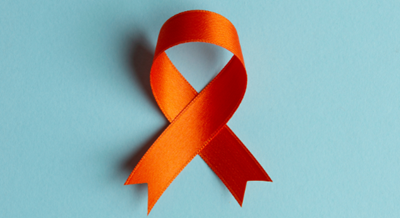
Self-harm is hard for everyone, both those who feel compelled to do it, as well as those who care about them. We explore a type of treatment for self-harm.
Self-harm serves different functions for different people at different times. Nevertheless, it can be said that the main function of self-harm is to manage unbearable emotion.
At our annual Self-Harm Awareness Conference, Dr Richard Booth, Director of Psychology at St Patrick's Mental Health Services (SPMHS), discussed the use of one particular form of therapy in the treatment of self-harm, as well as the challenges of balancing acceptance and change.
Self-control can be learned
Dr Booth began by exploring whether self-harm is a single construct. He shared a video of four-year-olds participating in Walter Mischel’s “Marshmallow Test”. Watching the children desperately try to resist the temptation of one sugary treat long enough to earn themselves a second proved highly entertaining. The serious point at the core of the test, though, was Mischel’s finding that self-control was something that could be learned, even from a very young age, to manage urges and delay gratification.
Mischel’s work was an inspiration to a young American psychologist, Marsha Linehan, who was encountering women in a women’s refuge who were self-harming. Seeing self-harm as a skills deficit at times of emotional regulation led her to improve the women’s skills at times of crisis. This was the start of an approach called Dialectical Behaviour Therapy (DBT), which combines standard Cognitive Behavioural Therapy (CBT) techniques for emotion regulation and reality-testing, with concepts of distress tolerance, acceptance, and mindful awareness.
Balancing acceptance and change
One of Linehan’s observations was that, when she pushed too hard for change, the women felt invalidated and shamed, and became even more stuck. Progress was also limited when she shifted her focus, trying to understand where people were coming from, listening to their stories, acknowledging their pain: the women felt frustrated because this approach also led to little change. This heralded one of the important cornerstones of DBT, namely the sensitive balance between acceptance and change: clinicians are always trying to maintain this equilibrium, helping service users to find their own balance and walk that middle path.
Dr Booth shared a quote from Linehan – “the person is doing the best they can – but they could do better, try harder and be more motivated to change” – to demonstrate a classic DBT dialectic.
Self-harm: a self-control deficit?
The psychology team at SPMHS uses the group-therapy element of Linehan’s DBT model in its work with people who are self-harming. Generally, DBT isn’t delivered in standalone elements; however, balancing resources and patient need, it was decided that it was more ethical to deliver a component of the therapy to everyone who was self-harming in the hospital, rather than the entire programme to a much smaller group. This approach yielded positive results and, in 2014, the team at SPMHS published two papers describing the impact of a skills-only intervention and of group work. The programme continues to develop.
The research work of the team has highlighted two distinct groups in terms of self-control. Renaming the model of self-control from Walter Mischel’s time as “under-control”, Dr. Booth explained that these are people who tend to have chaotic relationships or display excessive intimacy; emotion is pouring in on them in a way that is very hard to deal with and life feels out of control. To these people, self-harm can often feel like a relief.
The other group – about 20% of those who self-harm in the hospital – are over-controlled. At its extreme, this manifests as an aloof and distant interpersonal style, a tendency to inhibit emotions and a pattern of rigid control. What tends to emerge is a state of pervasive emotional loneliness in which self-harm is one possible manifestation. This is often a state of hidden suffering in which the person puts on a face or mask of contentment, with the catchphrase “I’m fine”, in an attempt not to distress others.
Self-harm in those who over-control their emotions
Of all the people who come to SPMHS, 80% of those in the under-controlled category will have a recent history of self-harm, while 20% of those who over-control will self-harm. Each group’s experience of self-harming is quite different. For those in the over-controlled group, it tends to be more private; sometimes spouses don’t even know. Instead of being impulsive, it’s much more likely to be planned. It follows periods of over-control where, after shutting down their emotions for a certain amount of time, people self-harm. There can be an intensity to this that make the self-harm very risky. Dr Booth likened this to pushing a balloon underwater and how, when you let go, it shoots back up.
At SPMHS, a programme called Group Radical Openness has proven very helpful for people who over-control. It’s a four-month programme, and the rate of self-harm at the end is almost eliminated. Dr Booth noted that, when people think of how to help people to regulate their emotion, they often think of mindfulness and so on, and that will help to down-regulate emotion. However, what the experience of group work in SPMHS shows is that people who are over-controlled already do that to perfection: they do not need more ways to down-regulate their emotion. It’s a very different approach.
A hopeful message
In conclusion, Dr Booth acknowledged that self-harm is hard for everyone, both those who feel compelled to do it, as well as those who care about them. Self-harm clearly serves different functions for different people at different times. Nevertheless, it can be said that its main function is to manage unbearable emotion. This is, in fact, a hopeful message because it means that, if we can better learn to manage emotion, we can eliminate the need to self-harm.
If you or someone you know is self-harming, you can find more information about self-harm on our website or from Pieta. You can also see our Frequently Asked Questions (FAQs).
Continue to…
Supporting those bereaved by suicide


